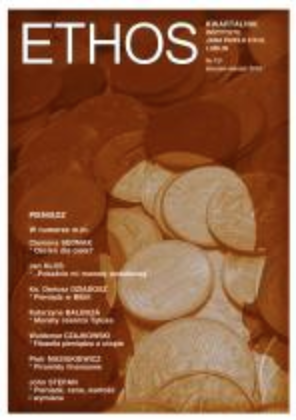MIEJSCE WYMIANY NIEPIENIĘŻNEJ W EKONOMII
Studium przypadku nieodpłatnej pracy kobiet
Non-Monetary Exchange, as seen
from the Perspective of Economics: A Case Study of Unpaid Women’s Work
Author(s): Anna Zachorowska-MazurkiewiczSubject(s): Sociology, Socio-Economic Research
Published by: Katolicki Uniwersytet Lubelski Jana Pawła II - Instytut Jana Pawła II, Wydział Filozofii
Keywords: non-monetary exchange; money; unpaid work; care work
Summary/Abstract: Money has got an essential meaning in economics. By definition economics as a discipline deals with decision making process in the context of scarcity or with social provisioning. However, at the rise of economics in the classical period (at the turn of the 19th century), its domain was assigned to market exchange, or, in other words, monetary exchange. Activities are classified as economic due to their being linked to one of the four essential economic activities: resource maintenance, production, distribution or consumption. Those that do not involve monetary exchange, however, have been left out of the area of the interest of economics. The return of economists to considerations involving non-monetary exchange is linked to considerations regarding market failures (welfare economics and public goods, or externalities) of the 20th century. Even though economics has begun to take into account non-monetary exchange, it still has not fully included non-monetary exchange in its domain. There are still a number of economic activities that stay outside the scope of the mainstream considerations. Moreover, non-monetary character of these activities impacts their social perception. In the article a case study of unpaid women’s work, including care work, has been used to illustrate problems raising from nonmonetary exchange.
Journal: Ethos. Kwartalnik Instytutu Jana Pawła II KUL
- Issue Year: 31/2018
- Issue No: 1
- Page Range: 265-278
- Page Count: 14
- Language: Polish
- Content File-PDF

